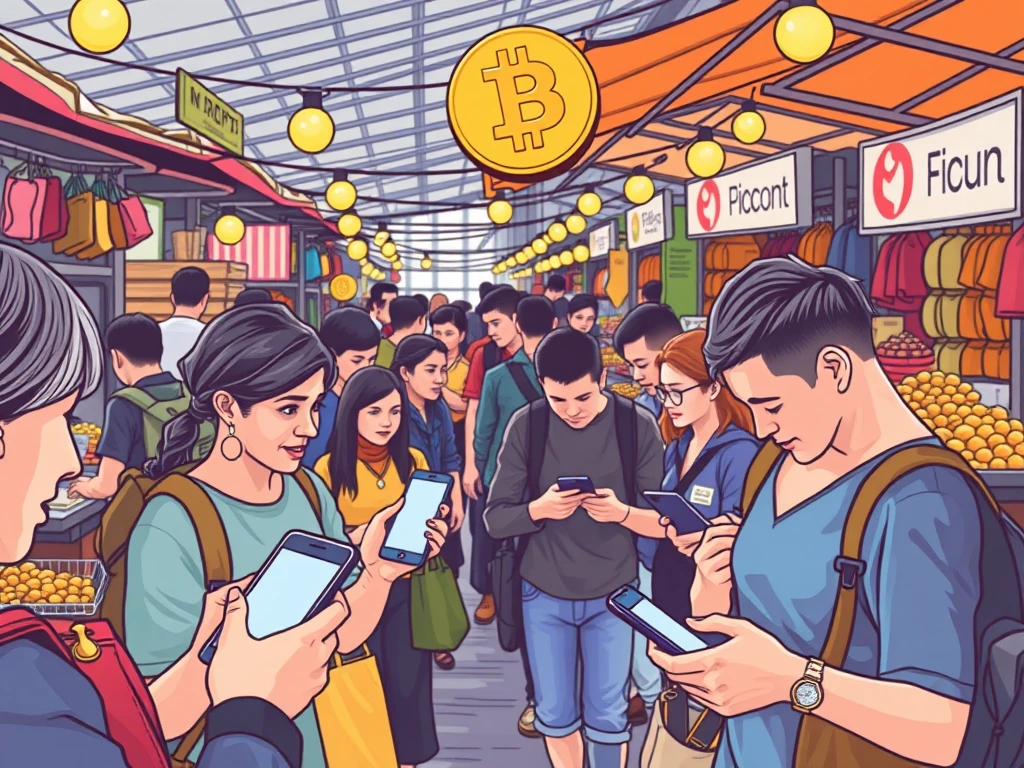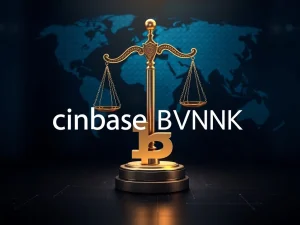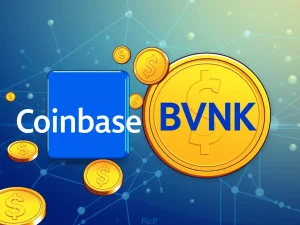Discover Real-World Use Cases: Can You Actually Buy Anything with Pi Coin in 2025?

Pi coin. It’s been buzzing in the crypto sphere for years, promising to be the ‘crypto for the people.’ After a long wait, the Pi Network finally launched its open mainnet in February 2025. But the million-dollar question remains for curious crypto enthusiasts and eager Pi miners alike: Can you actually buy Pi coin and use it to purchase anything in the real world in 2025? Let’s dive deep and uncover the truth about Pi Network’s real-world use cases and whether this digital currency is more than just digital dust.
What is Pi Coin and Why the Enormous Hype in 2025?
Back in March 2019, a team of Stanford Ph.D.s – Nicolas Kokkalis, Chengdiao Fan, and Vincent McPhillip – set out to tackle a major hurdle in the crypto world: accessibility. Unlike Bitcoin or Ethereum, which often require hefty investments in mining hardware, Pi coin was designed to be mined directly from your smartphone. The vision was simple yet powerful: to democratize cryptocurrency, putting the power of mining in the palm of everyone’s hand, without draining your battery or data.
This approach sparked viral growth for the Pi Network. The invitation-only mining system created a sense of exclusivity and fueled rapid social sharing. By 2021, the app boasted over 20 million users, affectionately known as ‘Pioneers.’ By late 2023, that number reportedly surged to 47 million, making it one of the largest pre-mainnet crypto communities globally.
Here’s a quick rundown of key milestones in Pi Network’s journey:
- March 2019: Pi Network launches its beta app on Android and iOS.
- 2020–2021: User base explodes through referrals; Pi phases progress towards testnet.
- December 2021: Closed mainnet goes live; Pi transactions are confined within the Pi ecosystem.
- 2022–2024: Over 100 Pi apps are developed and tested within the closed economy.
- February 2025: Pi Network officially launches its open mainnet, enabling interaction with the broader crypto world.
This pivotal open mainnet launch paved the way for Pi coin (PI) to be listed on centralized exchanges (CEXs) and venture beyond its walled garden. It was a significant step towards realizing the project’s ambition of becoming a truly usable digital currency for everyday transactions. From its humble beginnings as a student project, Pi Network’s trajectory has been remarkable. But now that it’s live and tradable, the crucial question persists: Can you actually use Pi coin to buy things?
Did you know?
Over 2 million users passionately voted for Binance to list Pi coin. Yet, the world’s largest exchange has remained notably silent. Despite Pi Network’s massive user base and a fully functional mainnet, Binance hasn’t budged. Speculation abounds, with some citing concerns over decentralization and others pointing to the controlled KYC process. It serves as a stark reminder that in the crypto realm, even a massive community can’t always sway the major gatekeepers.
Where Can You Actually Buy Pi Coin in 2025?
Following the much-anticipated open mainnet launch in February 2025, Pi coin has indeed become available for trading on several cryptocurrency exchanges. As of April 2025, you can find Pi coin listed on these exchanges:
- OKX: One of the pioneers in listing PI, offering trading pairs like PI/USDT.
- Bitget: Provides PI trading with a focus on liquidity and user-friendly platforms.
- MEXC: Another early supporter, facilitating PI trading pairs.
- BitMart: Supports PI trading, though some listings may be in the form of IOUs.
- HTX (formerly Huobi): Has listed PI, but similar to BitMart, some listings are IOU-based.
Despite fervent community campaigns and over 2 million votes advocating for its inclusion, Binance has not listed Pi coin as of April 2025. Reasons for this hesitation often revolve around blockchain compatibility, transparency issues, and regulatory considerations.
Did you know?
Many Pi coin listings on exchanges are actually IOUs – “I Owe You” tokens. These are not the real deal. These IOUs are essentially speculative placeholders, not backed by actual mainnet Pi. This means you can’t withdraw them or use them within the genuine Pi Network ecosystem. It’s akin to trading a ticket for a movie that hasn’t even been released yet. Always double-check if you are buying the genuine PI token or just a promise.
What Can You Actually Buy with Pi Coin? Real-World Use Cases Unveiled
Now, let’s get to the heart of the matter – what can you actually buy with Pi coin? While you might not be purchasing a luxury car with Pi just yet, the Pi community has documented a growing list of purchases, including:
- T-shirts, mugs, and phone accessories
- Freelance graphic design services
- Basic electronics and gadgets
- Food, drinks, and meals at local restaurants (often in Pi-focused events)
- Handmade crafts and unique collectibles
However, there’s a crucial caveat. Most of these transactions are happening within social media groups, Telegram chats, or Pi Network’s own ecosystem apps like Pi Browser and Pi Chat. These platforms serve as informal, community-driven marketplaces, relying heavily on trust and reputation rather than formal escrow systems.
So, while Pi coin isn’t quite ready for mainstream retail giants, it is indeed functioning – in a decentralized, grassroots way. Think of it more as a modern crypto-powered barter system than a fully integrated global payment network. For now, at least, this is the reality of real-world use cases for Pi.
Pi Network Merchant List – Fact or Fiction? Separating Reality from Hype
If you’ve searched for “Pi coin accepted stores” on Google, hoping for a list of your favorite retailers, you’ve likely been disappointed. There’s no official, centralized Pi Network merchant list that guarantees widespread acceptance. Instead, merchant adoption is organic and highly localized. For example, a group of Pi Pioneers in Indonesia might be able to buy groceries with Pi, while a community in Vietnam uses it for mobile data top-ups. This decentralized nature makes it challenging to track, standardize, or verify merchant adoption on a global scale.
However, merchant adoption, while still in its early stages, is gaining momentum. With the open mainnet now live, the conversation has shifted from “if” Pi coin will integrate with the broader crypto ecosystem to “how fast” it can onboard legitimate merchants and expand its real-world use cases.
One promising development is the rise of Know Your Customer (KYC)-verified Pi apps. These platforms require both users and businesses to complete identity verification before participating in the Pi economy. This added layer of trust is crucial for building a more legitimate commercial environment where merchants feel more secure accepting Pi coin as payment.
In the months following the open mainnet launch, the Pi Network’s developers and community have been actively focusing on scaling real-world integrations. These efforts include:
- Local businesses in countries like Nigeria, Vietnam, Indonesia, and the Philippines are beginning to accept Pi for goods and services.
- Platforms like Pi Chain Mall and other marketplaces are facilitating digital commerce using Pi.
- Testing third-party integrations to connect Pi with decentralized finance (DeFi) protocols, cross-chain bridges, and non-fungible token (NFT) platforms is underway.
- Pi Browser and Pi Apps are empowering decentralized application (DApp) developers to launch innovative payment-enabled services using mainnet Pi.
With over 100 Pi apps already developed during the testnet phase and a global community of KYC-verified users, Pi Network now possesses the infrastructure to cultivate a real, scalable economy. Whether this evolves into a thriving merchant network or remains a niche payment layer hinges on the community’s continued development and adoption. The growing interest in onboarding merchants through KYC-verified Pi apps suggests a slow but potentially sustainable adoption model. Furthermore, with the open mainnet live, the expectation is that Pi Network will introduce integrated DeFi protocols, decentralized exchanges (DEXs), and NFT marketplaces. If these integrations are successful, significant use cases beyond the current Pi ecosystem could emerge.
Did you know?
During PiFest 2025, a community-driven event, over 1.8 million users participated in transactions using Pi coin across 58,000 active merchants worldwide. This event showcased the Pi Network’s expanding real-world adoption and its potential to facilitate everyday commerce, even if on a smaller scale.
Is Pi Coin Truly Ready for Cryptocurrency Payments in the Real World?
Let’s be realistic: Pi coin isn’t poised to replace major payment processors like Visa anytime soon. It’s not yet equipped to power global commerce or even rival Bitcoin’s adoption in places like El Salvador. However, Pi Network serves as a fascinating experiment, a testbed for exploring how cryptocurrency payments might function when driven by community trust and engagement rather than solely by institutional backing.
Think of it less as a universal payment solution and more as a localized, crypto-enhanced barter system. If Pi Network successfully navigates its open mainnet rollout and strategically expands merchant onboarding with robust compliance and liquidity support, 2025 could indeed be the year Pi transitions from an intriguing experiment to a genuine contender in the cryptocurrency payments landscape.
Final Verdict: Can You Buy Stuff with Pi Coin?
Yes, you can buy stuff with Pi coin, but with important limitations. You can spend Pi coin, but primarily within select peer-to-peer (P2P) markets, community-supported stores, or pilot programs initiated by Pi Pioneers. The majority of these transactions are still happening within closed ecosystems, without widespread, large-scale merchant integration. But is this necessarily a setback?
Perhaps not. The early days of Bitcoin were similarly characterized by experimental, niche use cases and widespread skepticism. Back then, buying a pizza with Bitcoin (BTC) was considered revolutionary. Now, BTC is a mainstream asset class, held in ETF portfolios and corporate treasuries. Whether Pi Network will break through to similar levels of adoption or fade into obscurity remains to be seen. Key factors will include regulatory clarity and the network’s ability to scale beyond its dedicated internal community.
Whether you’re a believer or a skeptic, one thing is undeniable: the real-world test of the Pi Network economy is just beginning – and the global crypto community is watching with keen interest.
#Blockchain #Payments #Adoption #How to #Pi Network







